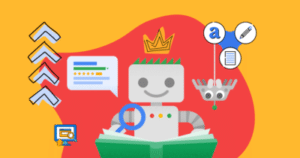SEO and UX go hand in hand with digital marketing success in the digital age, but striking the right balance between the two is critical. Here’s a closer look at what you need to know about both to get ahead in 2024 and beyond.
The days when you could successfully drive traffic to your site by leveraging only SEO are over. Search engines like Google are much more efficient than they used to be at serving up results that genuinely serve their users’ needs, and modern SEO strategies need to be adapted with this in mind.
For example, outmoded techniques like keyword stuffing no longer work and haven’t for some time. Instead, it’s all about techniques that consider overall user experience (UX) – like semantic search optimization, to name just one example. Here’s a closer look at how you and your team can better blend SEO and UX to achieve your goals in 2024 and beyond.
- Balancing SEO Requirements with User Preferences
- Best Practices for Blending SEO and UX
- Maintaining SEO Performance and User Satisfaction
Balancing SEO Requirements with User Preferences
Although tried and true techniques like strategic keyword usage are still important, the best SEO practices are trending further into UX territory. That means what Google is looking for in a well-optimized website are the elements your audience prefers.
Basics that can help make your site and web content more palatable to both search engines and human users include:
- Improving text readability by keeping sentences and paragraphs short, as well as using headings, images, and graphics to break up blocks of text
- Optimizing images and other site elements for speed, as most users won’t wait longer than 2 seconds for a page to load
- Making navigation menus intuitive so visitors can easily find what they’re looking for
- Crafting content and site layout with user intent in mind

Best Practices for Blending SEO and UX
The following are some more key website UX techniques digital marketers should implement to ensure they’re paying enough attention to both UX and SEO.
Voice search optimization
With options like Google Assistant and Alexa becoming increasingly popular as ways to find information, optimizing for voice search is a must.
You can do this by using long-tail keywords and conversational language to craft content and plan your site. Structuring your data using schema markup can also help.
Strategic internal linking
Embracing internal linking as a way to enrich content and make it more useful has been an important part of SEO for a long time now. It’s also an important part of the user experience, as it helps ensure helpful, important pages are as accessible as possible.
Use relevant keywords and phrases as anchor text to help boost SEO and clarify the purpose of links to visitors. Leverage links to target valuable pages, and check all links often to ensure they work properly.
Cross-device consistency
People no longer stick to desktop systems and laptops when surfing the web, shopping, and looking for information. An astonishing 92.3 percent of web users use a smartphone or other mobile device at least occasionally to search the internet.
That means modern web users expect today’s websites to be consistent across all devices, as do search engines. Solid SEO and UX design should be adaptive and easy to use via a full range of different screen sizes and types.
Interactive content
There will always be a place for digital marketing content formats like classic written blogs and videos. But today’s users are also looking for content experiences, so incorporating interactive content into your strategy is a must.
Interactive content supports SEO and UX by driving engagement and increasing the length of time users spend on a page. It also provides a simple, effective way to collect data and encourage social sharing. And thanks to no code interactive content options, going interactive couldn’t be easier.
Social media signals
In 2024, social media isn’t just for influencers and teenagers anymore. Everyone is on it and uses it daily, including to find recommendations and seek out information.
Incorporating your brand’s social channels into your digital marketing strategy can help boost SEO by signaling relevance to search engines and driving traffic. It can also contribute to user experience by meeting expectations, building trust, and fostering a sense of community around your brand.
Visual hierarchy
Understanding visual hierarchy and facilitating it on your web pages, graphic designs, and other visual elements can help you better balance SEO and UX. Visual hierarchy helps guide a user through interaction using elements like color, contrast, size, and more.
Here are some ways you can use visual hierarchy to improve the user experience:
- Create a focus point on each page by making one or two parts of a design or layout bigger than the rest to draw the eye
- Use white space and contrasting colors to help guide a user’s visual path
- Choose one temperature when picking colors to improve the cohesiveness of the page design
- Use typeface creatively to convey the importance of some text and add visual interest
- When in doubt as to how many objects to add on a page, go with an odd number – especially multiples of three
User feedback loops
One of the best ways to find out how your audience feels about their experience on your site is simply to ask.
Encourage them to give feedback via surveys, forms, and similar methods. Then, listen to what people say and act accordingly. Pinpoint areas that could be improved, and acknowledge what people already like about your site.
And when customers reach out to you with concerns, always respond as quickly as possible. Always be polite, professional, and personable in your responses.
Maintaining SEO Performance and User Satisfaction
Even the best UX and SEO strategy isn’t a “set it and forget it” deal. Algorithm updates, evolving consumer expectations, and industry trends mean the digital marketing landscape is constantly changing, so your strategy needs to be, as well.
Conduct customer experience audits at least once every six months to ensure everything is as it should be. Stay knowledgeable about emerging industry trends, and plan for algorithm shifts so you can adapt quickly.
And don’t forget to maintain a steady stream of dynamic interactive content to keep your audience engaged and delighted. It’s easy to do with ION. You won’t even need to write a single line of code. Get to know ION today, and prepare to be impressed!








